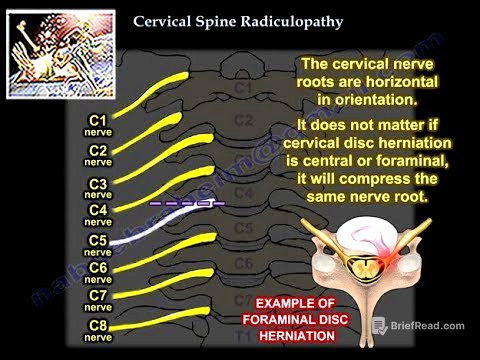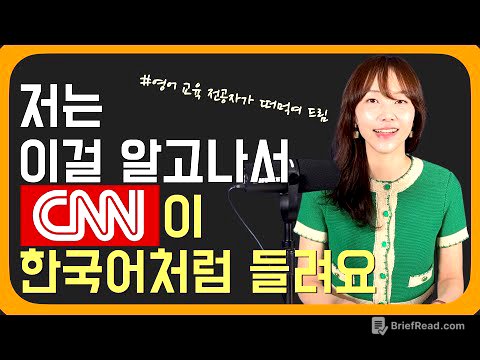TLDR;
This lecture provides an overview of physical modalities, specifically heat and cold therapies, used in sports rehabilitation. It covers the physiological principles, therapeutic effects, and practical applications of these modalities, including various methods and case scenarios. The lecture emphasizes the importance of understanding the phase of rehabilitation to align the appropriate modality for better outcomes.
- Heat and cold are traditional modalities used in sports rehabilitation.
- Ice is recommended for acute injuries, while contrast therapy is suitable for phase two rehabilitation.
- Superficial and deep heating modalities are used in chronic cases.
Introduction [0:15]
The lecture introduces the topic of physical modalities in rehabilitation, focusing on heat and cold therapies. It aims to provide answers to questions regarding the use of physical modalities in acute injury settings, including whether to use cold or heat application, the rationale behind it, and the available methods. The learning objectives include understanding the physiological principles and therapeutic effects of both heat and cold modalities, discussing the rationale of prescription based on different available modalities and the condition or phase of rehabilitation, and exploring practical aspects of using these modalities in day-to-day sporting scenarios using case scenarios.
General Principles of Heat and Cold [1:46]
Heat and cold are traditionally used modalities based on the principle of energy conservation, where heat is transferred through conduction, convection, or radiation. The tolerable temperature range for humans is 15°C to 45°C, within which no physiological damage occurs. Skin receptors detect heat and cold, with the most sensitivity around 30°C. Beyond the tolerable limits, pain receptors are stimulated, potentially causing tissue damage and triggering behavioral regulation to avoid the extreme temperatures.
Physiological Effects of Temperature Change [4:47]
Physical changes due to temperature differences include variations in metabolic rate, following Brands of Law where the basal metabolic rate halves with every 4°C change. Beyond the tolerable range, protein denaturation occurs, reducing enzymatic activity and causing cell damage. Viscosity is directly related to temperature, increasing with temperature increase and decreasing with temperature decrease. Heating softens collagen, which can be used therapeutically. Temperature affects sensory nerves, with cooling reducing nerve conduction and heating increasing it. Blood vessels respond with vasodilation to increased temperature and vasoconstriction to decreased temperature.
Therapeutic Effects of Heat [6:53]
The therapeutic effects of heat include accelerated tissue healing due to increased metabolic rate and blood flow, pain reduction through the pain gate theory and central sedation, and reduction of muscle spasm by softening collagen and reducing viscosity. Heat also improves tissue extensibility, increasing the range of motion and making it a useful precursor to stretching, connective tissue lengthening, muscle mobilization, tissue techniques, massage techniques, or joint mobilization in chronic cases.
Superficial vs. Deep Heating Modalities [9:13]
Heating modalities are classified as superficial or deep based on the depth of tissue affected. Superficial modalities transfer heat directly to the skin and subcutaneous tissue through conduction, convection, or radiation. Deep heating targets deeper tissues using electrical energy and electromagnetic waves to cause heating.
Superficial Heating Modalities [10:20]
Superficial heating modalities include hot water bottles, hot packs, heating pads, and wax baths, which use conduction to transfer heat. Convection methods involve heated liquid or air passing through the body, such as hydrotherapy or hot air blowing. Radiation uses infrared lamps to emit radiation that heats the tissue.
Deep Heating Modalities [11:31]
Deep heating modalities use alternating electromagnetic waves generated by electric current, such as shortwave diathermy or microwave diathermy. Ultrasound therapy uses sound waves to cause mechanical movement of molecules and produce heat in deeper tissues.
Hot Packs [12:13]
Hot packs are commonly used for superficial heating, utilizing commercially available packs, cloth dipped in hot water, or hot water bottles. Hydro gel packs or bags containing wheat or sand can also be used. These are wrapped in a towel to avoid direct contact and burns, applied for 15-20 minutes, with the temperature not exceeding 42°C at the skin level. It's important to check the skin's response after application due to potential hyper sensitivity.
Wax Bath [13:57]
Wax baths are used for local heating of extremities with paraffin wax maintained at 42-52°C. Application methods include dip and wrap, where the extremity is dipped multiple times to form layers, or dipping and keeping the extremity inside the bath. This is kept for 15-20 minutes and can be combined with exercise or stretching for a compounded effect.
Hydrotherapy or Whirlpool Bath [15:47]
Hydrotherapy or whirlpool baths use convection, with water heated to 36-41°C for about 20 minutes. The whirlpool effect stimulates mechano receptors, providing an analgesic effect through the pain gate theory. Antibacterial agents like sodium hypochlorite should be added due to multiple users, and water should be changed frequently. A side effect is potential edema in the dependent limb, requiring elevation after treatment.
Deep Heating Modalities: Diathermy [17:47]
Diathermy is a deep heating modality using electromagnetic waves. Shortwave diathermy uses radio waves at 27.12 MHz, while microwave diathermy uses slightly lower frequencies. These waves are absorbed by high water content tissues like muscle, causing deep heating. Treatment lasts 15-20 minutes at mild to moderate dosage, monitored by the individual's warmth feeling. It can be applied continuously or in pulse mode. Contraindications include metallic implants, which can cause burns, and electronic implants, which can malfunction.
Cryotherapy or Cold Therapy [19:41]
Cryotherapy decreases temperature for therapeutic application by removing heat, with an optimal temperature of 10°C to 15°C. Duration depends on the modality, depth, target tissue size, and fat content. It controls inflammation by decreasing metabolic rate, enzymatic action, and edema, preventing secondary injury. It also relieves pain through the pain gate theory and reduces muscle spasm, facilitating muscle activity and aiding in muscle movement, known as cryokinetics.
Cryotherapy Modalities [22:24]
Common cryotherapy modalities include ice packs, gel packs, water bottles, and green peas. Commercial cryotherapy units in high-performance centers use cryoflow therapy or conduction. Cold water immersion is useful for extremities, while ice towels and ice massage are also effective. Evaporative cryo sprays are used in sports to reduce pain immediately.
Ice Packs in Detail [25:17]
Ice packs use conduction and are part of the PRICE protocol. They should be used with a towel to avoid direct skin contact and inspected frequently to prevent injuries. Duration is 15-20 minutes, depending on the desired depth of effect.
Contrast Therapy [25:53]
Contrast therapy uses alternating heat and cold modalities to produce a pumping effect through vasodilation and vasoconstriction. This increases range of motion, aids healing, and reduces pain and spasm. It is used in phase two, chronic pain cases, and delayed onset muscle soreness. The protocol starts with 3-4 minutes of heat, followed by 1 minute of ice, repeated for 4-5 cycles, ending with cold to address swelling.
Case Scenario: Applying Modalities Practically [26:48]
In the case of Raani, a volleyball player with a twisted ankle, ice application is recommended due to the acute injury. Ice causes vaso constriction, decreasing blood flow and preventing secondary injury. Heat application would increase blood flow and swelling, compromising healing. Ice can be applied locally or with a spray, combined with compression and elevation, for 15-20 minutes, repeated 2-4 times a day for the first 3 days. While inflammation is necessary for healing, ice application controls excessive inflammation without completely reducing it.
Summary [29:46]
Physical modalities, heat and cold, are traditional forms that should be aligned with the phase of sports rehabilitation for better outcomes. Ice is used in acute cases with compression and elevation. Contrast therapy is used in phase two to reduce pain and increase range of motion. Chronic cases benefit from superficial or deep heating modalities like diathermy and ultrasound therapy. Cryotherapy provides immediate cooling.









